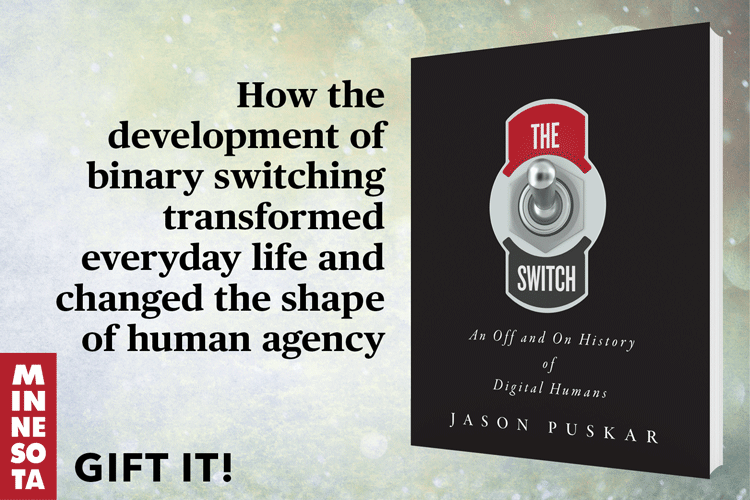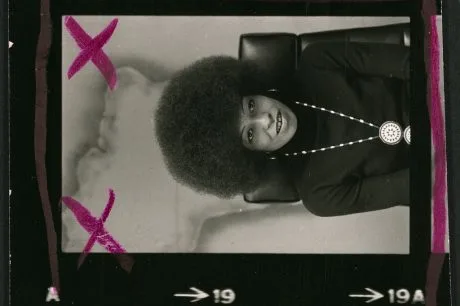Imagine a US literary culture—perhaps in the year 2030—in which African Americans are the editors of the New Yorker and the Atlantic Monthly, Poetry, the Paris Review, and n+1; the editors in chief of Random House and Simon & Schuster and W. W. Norton and Graywolf; the editors of the New York Times Book Review and the New York Review of Books; as well as the founders and editors in chief of a handful of new, thriving, and critically acclaimed publications and publishing houses (whether independent or bought out by the conglomerates), and upwards of 30 or 40 percent of all employees throughout the industry as a whole. Or imagine the same scenario, with the people in those positions all being instead, say, Cuban Americans or Vietnamese Americans.
We’re hardly on track for such a transformation of the field. But if something like this were to come to pass, it wouldn’t be without precedent.
In the first decade of the 20th century, it was both virtually impossible and virtually unheard of for a Jewish person, irrespective of their individual talents, to be hired for any job at a major American publishing company—even if they were Ivy League graduates, heirs to family fortunes, and had brilliant literary minds. They couldn’t get hired on the editorial staff of a widely circulated American magazine, or be granted a professorship in an English department at a prestigious university, either. But all that started to change in the decades after the 1910s, when Jews entered the industry en masse. In addition to founding many of the today’s largest publishing companies, Jews became so influential throughout the industry that by the 1960s American writers as different as Truman Capote, Jack Kerouac, Katherine Anne Porter, and Mario Puzo began to complain about a “Jewish literary mafia.” In short, a minority group went from almost complete exclusion to full literary enfranchisement in a matter of decades.
Understanding that history can help us to understand what will be necessary if we’re serious about finally having a more diverse, less exclusionary publishing industry.
If you read articles about publishing in the US, you’re already aware that a lack of diversity is a pressing problem right now. You may have seen the hashtags #publishingsowhite and #publishingpaidme; read the many essays, perused the surveys, and cringed admiringly through recent novels, like Zakiya Dalila Harris’ The Other Black Girl and Uwem Akpan’s New York, My Village, which serve up publishing’s unbearable whiteness for our edification and horror. You may also have noticed recent efforts to bring some long-overdue diversity into the companies that produce the books we read, like the hiring of Lisa Lucas to lead Pantheon/Schocken. And, as an extensive, wildly important PEN America report by James Tager and Clarisse Rosaz Shariyf, published last October documents, as well intentioned as these recent efforts to address the problem may be, those of us who want to see a more diverse publishing industry have reasons to be skeptical.
We’ve been here before. More than thirty years ago, the Association of American Publishers surveyed its members and found that “out of a total of 69,550 employees, 9.3% were African Americans, and 20.8% could be considered minorities,” mostly “in clerical categories.” An extensive 1994 report in Publishers Weekly remarked that “no one … dispute[s] the fact that the book publishing industry lacks representative numbers of African American, Asian and Hispanic employees.” Two years later, a New York Times article reported that even while African American consumers bought hundreds of millions of books each year, only “3.4 percent of the managers, editors and professionals who choose the nation’s popular literature” were African American. The article also noted that “there are so few Hispanic employees … that it’s not unusual that a major publishing house like HarperCollins … runs its new Libros line of Hispanic literature without a Hispanic editor involved in the project.”
By the 1990s, then, at least according to those articles, increased diversity in publishing was already a widely shared goal. And, at that time, a variety of initiatives, including new imprints and companies, were created to pursue this goal. As Publishers Weekly phrased it at the time: “Everyone agrees that there should be more minorities in the business.”
Why then, some thirty years later, haven’t those efforts made much of a difference? Why did it feel, in the mid-2010s, like the conversation was starting from scratch—and why, as the PEN America report phrased it, has “the debate over the lack of diversity in publishing … seemed to stagnate, or to progress only in fits and starts”? Most importantly, how can we make sure that the efforts being made right now to increase the diversity of publishing will actually increase the diversity of publishing?
To answer those questions, we have to understand not just the fact that American Jews overcame prejudice to thrive in the publishing industry, but how that happened.
First, it’s important to acknowledge just how drastic the transformation was. Publishing, and US literary culture in general, was, once upon a time, viciously and openly antisemitic. While a few Jews had already succeeded as writers and in other culture industries, it is 1912—when Alfred Knopf got a job with the accounting department of Doubleday, Page, & Company—that is generally recognized as the first time an American Jew was offered employment by a major US publishing house.
Anti-Jewish discrimination didn’t disappear then. But, over the half century that followed, American Jews flourished in the book business. They founded Random House (later Penguin Random House) and Simon & Schuster, the two mammoth companies whose merger was recently stymied by the government. They also founded Alfred A. Knopf, Inc.; Boni & Liveright; Viking; Pantheon; Farrar, Straus and Company; Basic Books; Grove Press; and many others.
Along with founding their own firms, around midcentury Jews also began to be hired, and began rising to leadership positions, at the major US publishing houses founded by non-Jews in the 19th century, like Doubleday, Harper, and Wiley. Jews were instrumental in innovations like the Book-of-the-Month Club and the popularization of mass-market and trade paperbacks. In the postwar decades, elite English departments finally began to hire them, and by the 1970s one estimate suggested that 13 percent of all English professors at the leading American universities were Jewish. Jews were even more conspicuous among the editors and critics whose reviews helped books get attention. There wasn’t ever an actual “Jewish literary mafia,” but it’s true that by the 1970s discrimination against Jews in US literary culture had become a thing of the past. Since then, it’s difficult to imagine a person being denied any role in any US publishing company, from the stockroom to the boardroom, because of their Jewishness.
This transformation of the field seems to have been permanent, too: later generations of American Jews have continued to thrive in publishing. As I finished research for my book on the subject a couple of years ago, I took a look around and found that people of Jewish heritage were at that time serving as the editors of the New Yorker, the New York Times Book Review, the Atlantic, the New York Review of Books, Poetry, the Paris Review, n+1, and Electric Literature; as the publishers, or top editors, of Simon & Schuster, Random House, Penguin, W. W. Norton, Akashic Books, Other Press, and Graywolf; and as the leaders at industry players like Kirkus. That’s not even close to a comprehensive list.
By the 1990s, increased diversity in publishing was already a widely shared goal. Why then, some thirty years later, haven’t those efforts made much of a difference?
How can we explain this wholesale eradication of antisemitic prejudice in the publishing industry, when other forms of exclusion, like structural racism and patriarchy, have been so resilient in so many areas of American life?
There are several ways to answer that question, but one of the most compelling explanations has to do with the way that a minority group enters an industry. When minorities join a field gradually, in small numbers, they tend to suffer from what the sociologist Rosabeth Moss Kanter famously described as “tokenism,” on the basis of her study of an American corporation in the 1970s. Here’s how she describes tokenism:
Women who were few in number among male peers [in their departments] … sometimes … had the advantages of those who are “different” and thus were highly visible in a system where success is tied to becoming known … [but more often] they faced the loneliness of the outsider, of the stranger who intrudes upon an alien culture and may become self-estranged in the process of assimilation [and so] their turnover and “failure rate” were known to be much higher than those of men in entry and early grade positions.
In Kanter’s view, at least, this experience was not primarily the effect of gender or misogyny, per se, but of minority status. She argues that “any situation where proportions of significant types of people are highly skewed can produce similar themes and processes.”
But that’s not inevitable: a minority group can enter an industry in a different way. Economists have shown that if they enter a field together—and establish themselves as a significant cohort within it—members of a minority group can derive substantial benefits: better information sharing, tools for building and strengthening trust, more effective sanctions, and so on. The structural advantages that accrue to members of ethnic niches explain the many surprising concentrations of minority groups in contemporary American industries and fields—the fact that, for example, “one-third of all U.S. motels are owned by Gujarati Indians” and that “the concentration of Korean self-employment in dry cleaners is 34 times greater than other immigrant groups.” While discrimination clearly contributes to minority employment patterns, too, this vein of economic argument suggests that concentrations allow members of an ethnic niche to prosper within a field.
The Jews who entered publishing beginning in the 1910s did so, emphatically, not as tokens, but as a niche. Alfred Knopf worked only briefly at Doubleday, where he would have been the token Jew, but he quickly left that position to found a company with his Jewish wife and father and other Jewish employees, where he was part of a niche. Within a decade, this Jewish niche in publishing expanded, with many of the personnel across the different firms related through family or social ties. Thomas Seltzer, who published books first on his own and then at Viking, was Alfred Boni’s uncle; the founders of Random House and Simon & Schuster were young Jewish men who had previously worked at Boni and Liveright; and on and on. Even when they were hired at historically antisemitic and majority non-Jewish firms, departments, and publications, Jews could rely on their connections to their Jewish relatives, professors, and contacts elsewhere in the literary world for support. The Jewish ethnic niche that emerged allowed individual Jews in publishing not to suffer from tokenism but, on the contrary, to benefit from their minority status. And, as they flourished, they transformed the field, introducing or popularizing many elements of literary culture that now seem quintessentially American.
This history suggests we must transform the way diversity is sought out by publishing houses: our best hope is for other groups to benefit from the same kinds of advantages Jews did. We need to reject the idea that minority groups should be represented only in proportion to their groups’ prominence in the overall population: Jews, to be clear, have always been only a tiny minority in the US, never constituting more than 2 or 3 percent of the US population, and 2 or 3 percent representation in publishing wouldn’t have gotten them beyond tokenization. Even more importantly, we have to reject the notion that there is, or can be, an objective or meritocratic literary field in which individuals suffer no discrimination but get no special advantages. As that PEN report puts it, “progress only begins with placing more people of color in more roles throughout the industry. Hiring is the first step, but just as important is ensuring that the people who are hired or promoted have true power, support, and trust.” One crucial way to ensure that members of minority groups do have “power, support, and trust” is to allow them to have plenty of colleagues and coworkers from backgrounds similar to their own.
Of course, putting “true power” in the hands of a previously disempowered minority group usually terrifies some of the people who’ll lose some of their own power in the bargain. That’s why some observers complained, in the 1960s and 1970s, about a “Jewish literary mafia.” There were in fact some cases in which Jewish publishing executives crossed ethical or even legal lines in helping out people they thought of as members of their literary families (and I cover some of these cases in my book). But the establishment of a Jewish ethnic niche in American publishing didn’t lead to any sort of literary apocalypse (only antisemites and white supremacists believe that), and it did, undeniably, bring to an end the antisemitic discrimination against Jews in US literary culture. Jews in publishing can be credited for supporting much of what we think of, with pride and satisfaction, as the successes of 20th-century US literature.
As it happened with Jews in American publishing, in these new so-called literary mafia we’re hoping to see emerge by the end of the decade, there will be some group members who prove to be terrible at their jobs. Many more will turn out to be brilliant geniuses or hardworking, noble craftspeople. If allowed to become fantastically overrepresented, members of these groups, whichever groups they are, will have the opportunity to dig into eccentric and surprising positions and projects, to fan out across the industry so as to better collaborate and even collude, and to indulge their own strangest ideas. American literature wouldn’t be fruitlessly chasing a meaningless dream of meritocracy, but instead it could be understood as reflecting, kaleidoscopically, the diverse experiences and ideas of these newly empowered groups.
In other words, I’m suggesting that what we’ll need to end the industry’s structural racism and white supremacy might be a new ethnic niche, or several of them. Obviously, the conditions facing aspiring Black, Latinx, Asian American, and Indigenous literary entrepreneurs aren’t the same as they were in the 1910s and 1920s. The conglomeration of the publishing industry since the 1960s means that it would be immensely more difficult, and very likely impossible, for minority entrepreneurs to do in 2022 what Alfred and Blanche Knopf did in 1915, what Richard Simon and M. Lincoln Schuster did in 1924, and what Bennett Cerf and Donald Klopfer did in 1927. The industry’s big players have grown so huge and anticompetitive that small publishing ventures can barely survive, let alone win the field. Still, ethnic niches don’t succeed only through the creation of new institutions. And it’s actually not too hard to imagine what the success of an effort to diversify the publishing industry might look like, using Jews’ success as a model. It’ll be a field that looks in 2030 like the one we imagined at the beginning of this essay, one that looks something like my casual survey of Jews in literary culture in 2020.
We should be rooting for the emergence of these new ethnic niches because they will confer all sorts of significant advantages to their members—like Jews who succeeded in publishing in the 20th century, people from those backgrounds would have rich networks of fellows to draw upon rather than confronting the negative effects of tokenism. The change might not always look pretty—some people from previously empowered groups might lose their jobs, however well deserved, to make space for new talents—and it’s not hard to imagine the accusations of “brown nepotism” or a “Black literary mafia,” or the fretting about the lost opportunities for white people that would likely get thrown around. (It’s not hard to imagine because we already have plenty of examples of those responses to calls for increased diversity.) Such calumnies would be just as common as, if no more meaningful than, the attacks on the Jewish literary mafia of the 1960s and 1970s.
The successful diversification of American publishing will not mean an end to group membership conferring advantages, but a change in which groups benefit from those advantages. Or here’s another way we can think about what we’re hoping for: if the diversification efforts end with elevating a few individuals in publishing (Lisa Lucas at Pantheon, LaSharah Bunting and Yahdon Israel at S&S, Denne Michele Norris at Electric Literature, Retha Powers at Henry Holt, Roxane Gay’s new imprint, and a handful of other well-meaning initiatives here and there), we’ll know they’re almost certainly not enough to unsettle the industry’s tacit, longstanding white supremacy. But if we see hundreds of members of one or two minority groups empowered at every level throughout the industry, including in all of the most prestigious and remunerative positions, we’ll know we’re seeing meaningful change. ![]()





